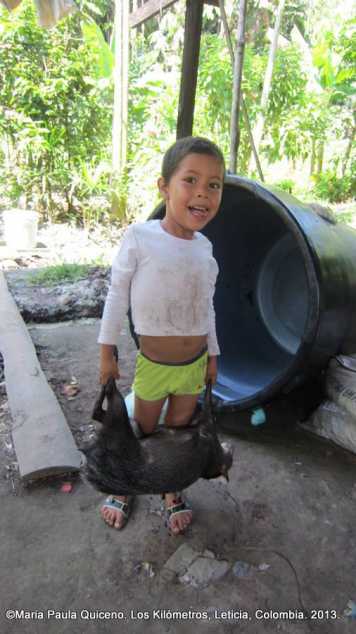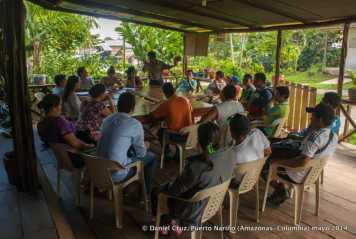TICOYA: Participatory Modeling for Sustainable Wildlife Management in the Colombian Amazon

Wildlife overhunting, together with habitat loss, poses serious threats to biodiversity, as well as to the people that depend on wild meat for food and income. The consumption of bushmeat by tropical forest dwellers, although historically sustainable, has increased in recent years leading to the “bushmeat crisis”, particularly in, but not restricted to, West and Central Africa.
In the Amazon Basin, despite changes due to urbanization, new market opportunities and rural-urban migration, most indigenous communities (approximately one million people) still base part of their sustenance on bushmeat hunting. Estimates of the yearly market value of bushmeat harvested by rural populations range around US$174 million for the whole of the Amazon basin compared to US$42-205 million across countries in West and Central Africa.
Additionally, to represent a significant contribution to the food security, hunting is a crucial element of the culture and identity of several rural communities. The challenge, therefore, is not to ban hunting but to prevent it from overexploiting wildlife and consequently extinguishing a crucial source of protein as well as a reservoir of biodiversity.
Together with land use changes and the development of infrastructures, the hunting of wildmeat increases the overlap of man and wildlife and the risk of emergent zoonotic diseases. The Chagas disease - caused by the parasite Trypanosoma cruzi and transmitted mainly by haematophagous insects known as Triatominae or “kissing bugs” – is especially widespread in Latin America. In Colombia between 700,000 and 1.2 million people are infected, while 8 million are at a high risk of infection. Given their social and ecological conditions and cultural traits, rural communities engaged in hunting are particularly vulnerable.
The aim of this project is to understand the socio-ecological conditions under which bushmeat hunting can be sustainable, ensuring food security and self-sufficiency and minimizing health risks. Together with the local communities and the local government institutions, we propose to develop effective models of community-based wildlife management (CWM) building on a local demand of the indigenous people of the Ticoya reserve, in the Colombian Amazon.

As part of a larger project led by the CGIAR Center for International Forestry Research, and together with the Ticoya people and the local government institutions, we will develop integrated models of CWM that incorporate complex feedback loops between animal population dynamics, hunting patterns, the ecology of the Chagas disease, and the strategies of the forest dwelling communities. We will use games to explore these models with the hunters and the other stakeholders in order to assess the impacts of their actions and investigate alternative scenarios, while learning through the process. This research will contribute to understand the limits and strengths of community wildlife management, and help the Ticoya communities to sustainably manage their resources and strengthen dialogue with the government.
Keywords
Bushmeat, livelihoods, sustainable hunting, food security, zoonotic disease, community-based wildlife management, participatory modeling, role-playing games.
Partners
- CGIAR (Center for International Forestry Research)
- Fundación SI
- PECET (Universidad de Antioquia)
- CIRAD
- Asociación ATICOYA
- Fundación Omacha
- CORPOAMAZONIA
- Gobernación del Amazonas
Contact
No database information available

